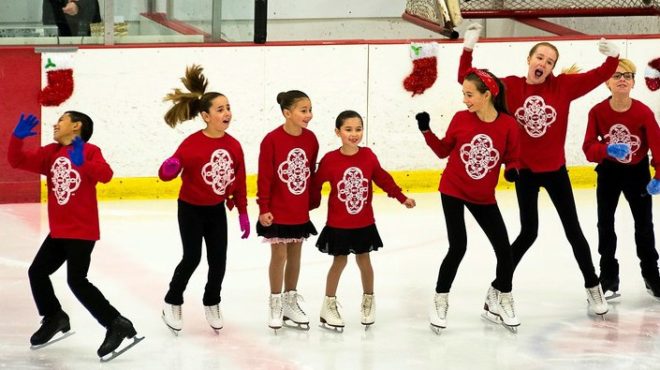Do Hockey Skates Have Toe Picks? The Truth Revealed

In the world of ice skating, the term “toe pick” often conjures images of figure skaters gracefully launching into triple jumps or spinning with precision. But what about hockey skates? Do they share this distinctive feature? The answer is not as straightforward as it might seem, and understanding the differences between figure and hockey skates reveals a fascinating intersection of sport, design, and functionality.
The Anatomy of a Skate: A Comparative Look
To address the question directly: no, hockey skates do not have toe picks. This distinction is rooted in the divergent demands of each sport. Figure skates are designed to facilitate jumps, spins, and intricate footwork, necessitating a toe pick—a serrated, teeth-like extension at the front of the blade. This feature allows skaters to launch into the air or dig into the ice for stability during complex maneuvers.
Hockey skates, on the other hand, prioritize speed, agility, and power. Their blades are smoother and flatter, with a rounded toe. This design minimizes the risk of catching on the ice during fast-paced play, which could lead to dangerous falls or disruptions in gameplay. The absence of a toe pick in hockey skates is a deliberate choice to optimize performance and safety in a high-speed, physically demanding sport.
Expert Insight: "The toe pick on figure skates is a tool for artistry and acrobatics, while hockey skates are engineered for speed and control. Removing the toe pick eliminates unnecessary hazards and allows players to focus on their game without distraction." — Dr. Sarah Thompson, Sports Biomechanics Specialist
Historical Evolution: Why the Difference?
The divergence in skate design can be traced back to the origins of each sport. Figure skating, with its roots in 19th-century Europe, evolved as a form of artistic expression on ice. The toe pick emerged as a functional innovation to support the growing complexity of jumps and spins. Hockey, meanwhile, developed as a fast-paced team sport with a focus on stickhandling, shooting, and strategic play. Its skates were designed to enhance speed and maneuverability, reflecting the sport’s unique demands.
Historical Context: The first recorded use of toe picks in figure skates dates back to the late 1800s, coinciding with the rise of competitive skating. Hockey skates, however, remained pick-free, reflecting their utilitarian design philosophy.
Practical Implications: Safety and Performance
The absence of toe picks in hockey skates has significant implications for both safety and performance. In hockey, players frequently engage in rapid starts, stops, and turns, often while battling opponents for control of the puck. A toe pick in this context could pose a serious risk, as it might catch on the ice or another player’s skate, leading to injuries such as sprains, fractures, or concussions.
Pros of No Toe Picks in Hockey Skates:
- Reduced risk of tripping or falling during play
- Enhanced speed and agility on the ice
- Improved safety for players in high-contact situations
Cons (Hypothetical if Toe Picks Were Added):
- Increased likelihood of accidents and injuries
- Disruption to gameplay flow and player performance
- Potential for equipment damage or malfunction
Myth vs. Reality: Common Misconceptions
Despite the clear differences, misconceptions about hockey skates persist. One common myth is that hockey players use toe picks for better grip or control. In reality, the rounded toe of a hockey skate blade provides ample stability without the need for serrations. Another misconception is that toe picks could enhance a player’s ability to stop quickly. However, hockey players rely on techniques like the “hockey stop,” which involves angling the blades outward, rather than digging into the ice.
Myth: Hockey skates have toe picks for better control.
Reality: Hockey skates feature a rounded toe for safety and speed, eliminating the need for toe picks.
Future Trends: Innovations in Skate Design
As technology advances, skate design continues to evolve. While toe picks remain exclusive to figure skates, hockey skates are seeing innovations in materials, blade curvature, and boot construction. For instance, lightweight composites and heat-moldable materials are improving comfort and performance, while advancements in blade coatings are reducing friction for even greater speed.
Future Implications: Emerging technologies like smart skates with embedded sensors could revolutionize how players train and perform, though the fundamental design principles—including the absence of toe picks—are likely to remain unchanged.
FAQ Section
Can hockey players use figure skates with toe picks?
+While technically possible, it is highly impractical and dangerous. The toe pick would significantly hinder movement and increase the risk of accidents on the ice.
Why don’t hockey goalies have toe picks on their skates?
+Goalie skates are designed for stability and quick lateral movements, not speed. Like player skates, they lack toe picks to prevent catching on the ice during critical saves.
Are there any hockey skates with toe pick-like features?
+No, traditional hockey skates do not incorporate toe picks or similar features. Any modifications would violate standard design principles and safety guidelines.
How do hockey players stop without toe picks?
+Players use techniques like the "hockey stop," where they turn their blades outward and dig the edges into the ice to come to a quick halt.
Conclusion: Design Meets Purpose
The absence of toe picks in hockey skates is a testament to the sport’s unique demands and the meticulous design considerations that go into athletic equipment. While figure skates rely on toe picks for artistic expression, hockey skates prioritize speed, safety, and functionality. Understanding this distinction not only clarifies a common misconception but also highlights the ingenuity behind sports equipment design. Whether you’re a player, coach, or enthusiast, appreciating these nuances deepens your connection to the game and its rich history.



